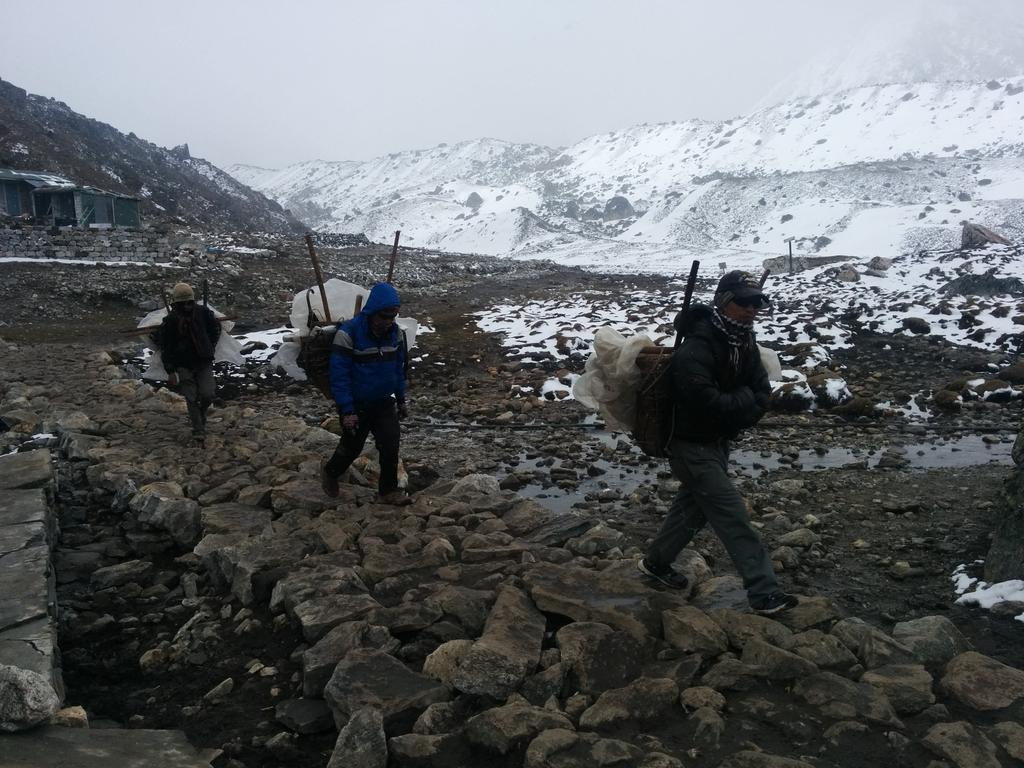
A powerful earthquake in Nepal has triggered an avalanche on Mount Everest, killing at least 18 people, according to reports.
An Indian army mountaineering team found 18 bodies on Mount Everest, after the avalanche swept through the base camp.
More than 1,000 climbers had gathered there at the start of the climbing season.
The earthquake hit Nepal and north India on Saturday afternoon, killing more than 1,300 people and collapsing buildings in Kathmandu.
Since then, climbers on the world's highest mountain have pleaded for help, saying an avalanche has destroyed camps and sent slabs of ice crashing in a "huge disaster".
"An avalanche from Mt Pumori has hit the base camp, burying a part of it," Nepalese tourism official Gyanendra Shrestha said.
"We don't have the details yet, but 10 have been reported dead so far, including foreign climbers."
"We are trying to assess how many are injured. There might be over 1,000 people there right now, including foreign climbers and Nepalese supporting staff."
Romanian climber Alex Gavan said on Twitter that there had been a "huge avalanche" and "many, many" people were up on the mountain.
"Running for life from my tent. Everest base camp huge earthquake then huge avalanche," he said.
"Huge disaster. Helped searched and rescued victims through huge debris area. Many dead. Much more badly injured. More to die if not heli asap," he later tweeted.
Another climber, Daniel Mazur, said Everest base camp had been "severely damaged" and his team was trapped.
"Please pray for everyone," he said on his Twitter page.
Rescue efforts hampered by snowy conditions
Rescue efforts are underway but heavy snow has prevented helicopters from reaching climbers, an official said.
AFP reporters on approach to the base camp said no rescue helicopters were on their way.
"We got caught in an earthquake on Everest. We are both OK ... snowing here so no choppers coming," they said.
But medics already at base camp for the climbing season were working hard to "save lives", doctor and mountaineer Nima Namgyal Sherpa said on his Facebook page on Saturday.
"Many camps have been destroyed by the shake and wind from the avalanche. All the doctors here are doing our best to treat and save lives," Dr Nima said.
Mohan Krishna Sapkota, joint secretary in the Nepalese tourism ministry, said the government was struggling to assess the damage on Everest because of poor phone coverage.
"The trekkers are scattered all around the base camp and some had even trekked further up. It is almost impossible to get in touch with anyone," Mr Sapkota said.
Choti Sherpa, who works at the Everest Summiteers Association, said she had been unable to call her family and colleagues on the mountain.
"Everyone is trying to contact each other, but we can't. We are all very worried," she said.
One climber, Arjun Vajpai, told India's NDTV that he had not been able to establish radio communication with anyone from his team.
"We had some 10 to 15 climbers including some sherpas up there and we still don't have any confirmation reports [of] whether they are OK or not," he said.
"It is snowing here for the past one and a half days. We haven't been able to establish radio communication with them."
An avalanche in April 2014 just above the base camp on Mount Everest killed 16 Nepali guides, making it the deadliest incident on the mountain.
April is one of the most popular times to climb Everest before rain and clouds cloak the mountain at the end of next month.
Saturday 25 April 2015
http://www.abc.net.au/news/2015-04-26/nepal-earthquake-triggers-deadly-mount-everest-avalanche/6422142